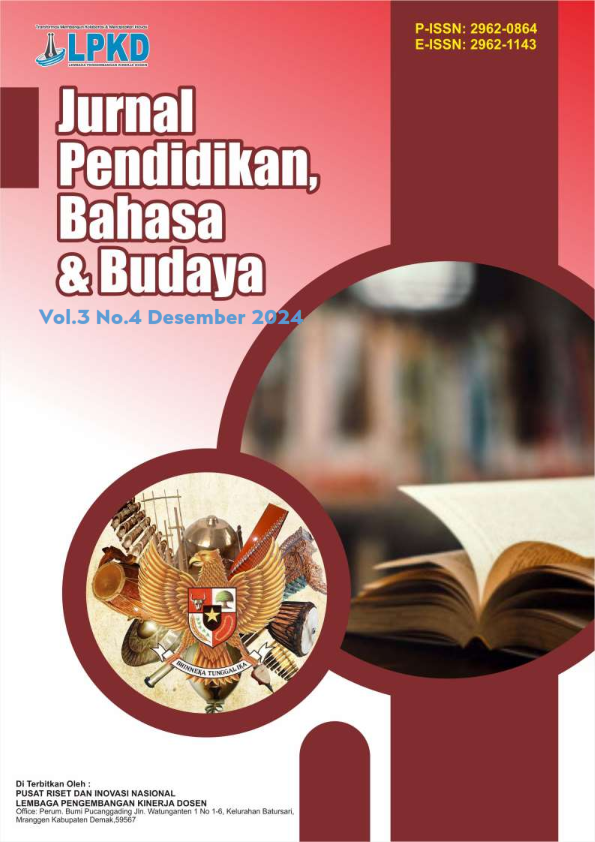Efektivitas Penggunaan Media Sosial sebagai Sarana Pembelajaran Interaktif di Kalangan Mahasiswa
DOI:
https://doi.org/10.55606/jpbb.v3i4.5670Keywords:
Interactive Learning, Social Media, StudentsAbstract
Social media has become an integral part of students’ lives and is increasingly being used as a means of interactive learning. This study aims to analyze the effectiveness of social media use in supporting students’ learning process, by highlighting the benefits, challenges, and solutions that can be applied. The research method used is a qualitative approach with case studies, in-depth interviews, and thematic analysis. The results of the study indicate that social media provides flexibility in accessing learning materials, increases academic engagement, and facilitates discussion and collaboration between students and lecturers. However, there are several challenges, such as distraction, unguaranteed validity of information, lack of structure in learning, and gaps in access to technology. To overcome these challenges, strategies are needed such as good time management, increasing digital literacy, active roles of lecturers in directing learning, and institutional support in increasing access to technology. With the implementation of the right strategy, social media can be an effective tool in supporting interactive learning, improving students’ academic quality, and encouraging educational transformation in the digital era.
References
Braun, V., & Clarke, V. (2022). Thematic analysis: A practical guide. SAGE Publications.
Denzin, N. K. (2018). The research act: A theoretical introduction to sociological methods (4th ed.). Routledge.
Junco, R., Heiberger, G., & Loken, E. (2011). The effect of Twitter on college student engagement and grades. Journal of Computer Assisted Learning, 27(2), 119–132. https://doi.org/10.1111/j.1365-2729.2010.00387.x
Kirschner, P. A., & Karpinski, A. C. (2010). Facebook® and academic performance: A study at the college level. Computers in Human Behavior, 26(6), 1237–1245. https://doi.org/10.1016/j.chb.2010.03.024
Nasrullah, R. (2015). Media Sosial; Persfektif Komunikasi, Budaya, dan Sosioteknologi. Bandung: Simbiosa Rekatama Media.
Siemens, G. (2005). Connectivism: A learning theory for the digital age. International Journal of Instructional Technology and Distance Learning, 2(1), 3–10. http://www.itdl.org/Journal/Jan_05/article01.htm
Siregar, A. (2022). Efektivitas penggunaan media sosial sebagai media pendidikan. EDU-RILIGIA: Jurnal Ilmu Pendidikan Islam dan Keagamaan, 5(4). http://dx.doi.org/10.47006/er.v5i4.12936
Sovitunnizar, M. R., & Slamet, S. (2024). Manajemen pembelajaran online dalam meningkatkan proses dan hasil belajar peserta didik. MOMENTUM: Jurnal Sosial dan Keagamaan, 13(1), 1-14.
Widada, C. K. (2018). Mengambil manfaat media sosial dalam pengembangan layanan. Journal of Documentation and Information Science, 2(1), 23-30.
Yin, R. K. (2020). Case study research and applications: Design and methods (6th ed.). SAGE Publications.
Yusuf, F., Rahman, H., Rahmi, S., & Lismayani, A. (2023). Pemanfaatan Media Sosial Sebagai Sarana Komunikasi, Informasi, Dan Dokumentasi: Pendidikan Di Majelis Taklim Annursejahtera. Jurnal Hasil-Hasil Pengabdian Dan Pemberdayaan Masyarakat, 2(1), 1-9.
Downloads
Published
How to Cite
Issue
Section
License
Copyright (c) 2024 Jurnal Pendidikan, Bahasa dan Budaya

This work is licensed under a Creative Commons Attribution-ShareAlike 4.0 International License.








